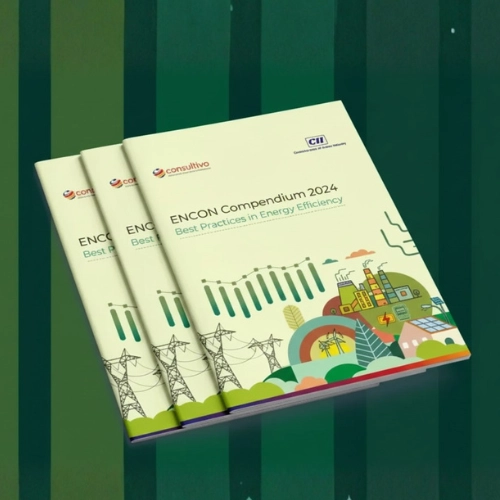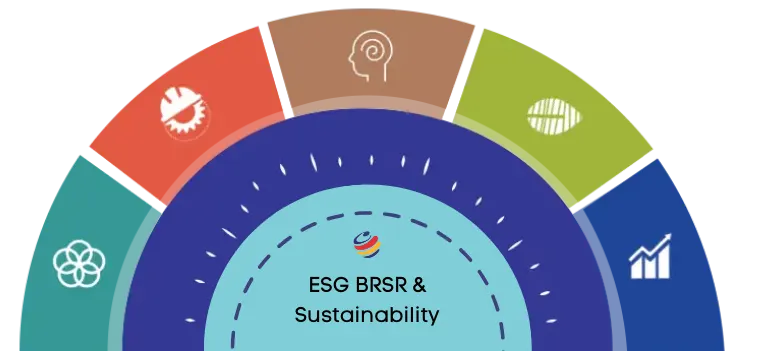A Green Audit Report for NAAC is neither a routine process, but an improvement tool that build reputation.
In today’s world, more and more people are becoming conscious of the impact their actions have on the environment. The same goes for institutions, where going green is not only a responsibility but also a way to stand out in a highly competitive market.
One way to do this in India is through the National Assessment and Accreditation Council (NAAC) Green Audit Report, which evaluates an institution’s environmental sustainability practices.
This report can provide valuable insights into areas where an institution can improve and also highlight its efforts towards sustainability.
Moreover, a positive NAAC Green or Environmental Audit Report can boost an institution’s reputation, attract environmentally conscious students and faculty, and even lead to funding opportunities.
In this article, we will explore the benefits of Green Auditing and how it can help your institution make a positive impact on the environment while enhancing its reputation.
Express your interest to participate in the environmental awards!
Don’t miss this opportunity to highlight your organisation’s commitment to a sustainable future.
To receive the detailed application form and guidelines, simply express your interest.
Why it is important to go green
Before we dive into the benefits of a NAAC Green Audit Report, let’s first discuss why it is important for institutions to go green.
Climate change is one of the most significant challenges facing our planet, and it is caused by human activities, including those of institutions. Going green helps institutions reduce their carbon footprint by adopting sustainable practices that reduce waste and promote conservation.
Moreover, institutions have a social responsibility to promote sustainability and environmental consciousness. By going green, institutions can lead by example and inspire others to follow suit.
Students and faculty members are increasingly seeking out institutions that prioritise sustainability, so going green can also help attract and retain top talent.
Benefits of NAAC Green Audit Report
The NAAC Green Audit Report provides a comprehensive evaluation of an institution’s environmental sustainability practices. This report provides valuable insights into areas where an institution can improve and highlights its efforts towards sustainability. The benefits of a Report of NAAC Green Audit include:
1. Identifying areas for improvement through a Green Audit Report for NAAC
The NAAC Green Audit evaluates an institution’s environmental sustainability practices in several areas, including energy conservation, water conservation, waste management, and green initiatives.
The green audit reports provide a detailed analysis of an institution’s performance in each of these areas, highlighting areas where improvements can be made.
This information can help institutions develop and implement plans to reduce their environmental impact and improve sustainability practices.
2. Enhancing reputation through Green Audit Report
A positive report of NAAC Green Audit can enhance an institution’s reputation by demonstrating its commitment to environmental sustainability. This environmental report can be used to showcase an institution’s efforts towards sustainability to prospective students, faculty members, and donors.
Institutions with a positive reputation for sustainability are more likely to attract and retain top talent, including environmentally conscious students and faculty members.
3. Attracting funding opportunities
Step-by-step process of obtaining Green Audit Report for NAAC
The NAAC Green Audit Report is a comprehensive evaluation of an institution’s environmental sustainability practices. The process of completing a NAAC Green Audit Report involves several steps, including:
1. Registering for obtaining a green audit report for NAAC
Institutions interested in Environment Audit and obtain a Green or environmental Audit Report for NAAC must first register for the audit. Registration involves providing basic information about the institution, including its name, location, and contact details.
2. Preparing for the audit
Institutions interested in completing a NAAC Green or environmental Audit need preparation. Preparation involves conducting a self assessment based on the green auditing checklist.
3. Conducting the audit
The NAAC Green or Environmental Audit is conducted by a team of experts who evaluate the institution’s environmental sustainability practices.
The audit team reviews the institution’s data and conduct site visits to assess the institution’s infrastructure and practices.
4. Receiving the Green Audit Report

How to prepare for NAAC Green Audit Report
Preparing for the NAAC Audit involves several steps.
Institutions should start by gathering data on their environmental sustainability practices, including energy consumption, water usage, waste management, and green initiatives. Institutions should also conduct internal audits to identify areas where improvements can be made.
It is essential to involve all stakeholders, including students, faculty members, and administrators, in the preparation process.
Institutions should develop a sustainability plan that outlines specific goals and strategies for reducing their environmental impact.
The plan should be regularly reviewed and updated to ensure that the institution is making progress towards its sustainability goals.
Examples of institutions that have benefitted from NAAC Green Audit Report
Several institutions have benefitted from completing a NAAC Green or environmental Audit Report. For example, the Indian Institute of Technology (IIT) Delhi completed a NAAC Green Audit Report in 2017, earning a score of 3.51 out of 4. This score placed IIT Delhi in the top 10 institutions in India for environmental sustainability practices.
Another example is the University of Hyderabad, which completed a NAAC Green Audit Report in 2019, earning a score of 3.60 out of 4. This score placed the University of Hyderabad in the top five institutions in India for environmental sustainability practices.
Tips for successful NAAC Green Auditing Report
Completing a successful NAAC Green Auditing Report requires careful preparation and attention to detail. Here are some tips for a successful audit:
1. Start early
Preparing for a NAAC Green Audit Report takes time, so it is essential to start early. Institutions should begin gathering data and conducting internal audits well in advance of the audit to ensure that they have time to address any areas for improvement.
2. Involve all stakeholders
All stakeholders, including students, faculty members, and administrators, should be involved in the preparation process. This will ensure that everyone is invested in the institution’s sustainability goals and that the institution is making progress towards those goals.
3. Be thorough
The Green Audit is a comprehensive evaluation of an institution’s environmental sustainability practices. Institutions should be thorough in their data collection and ensure that they have addressed all areas of concern.
4. Follow up on recommendations
The Green or Environmental Audit Report generally contains areas for improvement.
Institutions should develop a plan to address these recommendations and follow up on progress regularly.
The impact of NAAC Green Audit Report on institution’s reputation
A positive NAAC Green or Environmental Audit Report can have a significant impact on an institution’s reputation.
A positive report demonstrates an institution’s commitment to environmental sustainability, which can attract environmentally conscious students and faculty members.
It can also lead to funding opportunities from organisations that prioritise sustainability.
On the other hand, a negative or not so good Audit Report can have a detrimental impact on an institution’s reputation.
Poor performance in environmental sustainability practices can turn off environmentally conscious students and faculty members and lead to funding opportunities being lost.
Explore our environmental soutions
1. Environmental Risk, Compliance & Reporting
- Environmental & Legal Compliance Audits
- ISO 14001: EMS
- Due Diligence & Governance (EDD/ESG)
- Environmental Reporting
- Green Audit
2. Climate & Energy Solutions
3. Water & Resource Management
- Water Sustainability Solutions
- Pollution, Waste & Circular Economy

About Consultivo Environmental and ESG Services
Consultivo specialises in comprehensive Environmental Services, and ESG Services, including Environmental Audits, Environmental Due Diligence, Carbon Management, and Energy Management & Audits. We support ISO 14001 implementation, Water Sustainability, and Green Audits for truly sustainable operations.
About Consultivo:
Consultivo is a leading ESG Consultant in India, serving as an Advisory, Research, Audit & Training organisation for global businesses. We specialise in Sustainability, Business Excellence, and Risk Management across strategic and operational levels.
Key service verticals include Safety, ESG & Sustainability, Community, Social & CSR, Environment & Energy, HR & Human Rights in Business Information & Cyber Security and Management Systems.
As a premier ESG Consultant, we offer comprehensive services from ESG Materiality Assessment and Strategy Consulting to ESG/BRSR Report Preparation and Independent External Assurance.
Consultivo Academy also provides focused training and capacity building services.
Purpose/objective: To maximise awareness about the environment awards while reinforcing Consultivo’s authority as the Knowledge Partner in the ESG and environmental space.
Conclusion and call to action
The NAAC Green Auditing Report is a valuable tool for institutions looking to improve their environmental sustainability practices.
Completing a National Assessment and Accreditation Council Green Audit can help institutions identify areas for improvement, enhance their reputation, and attract funding opportunities. Institutions should start preparing for the audit early and involve all stakeholders in the process to ensure a successful audit.
In conclusion, going green is not only a responsibility but also an opportunity for institutions to stand out in a competitive market.
Completing a NAAC Green or environmental Audit can help institutions make a positive impact on the environment while enhancing their reputation.
We encourage all institutions to take meaningful steps towards environmental sustainability and obtain a NAAC Green Audit Report to assess their progress.
Explore further insights beyond the Green Audit! Uncover the crucial details of Environmental Compliance Audit.
Share this post
Category: Blog
Related insights
View more in Impact Stories | Blogs | Knowledge Bank | News and Events













